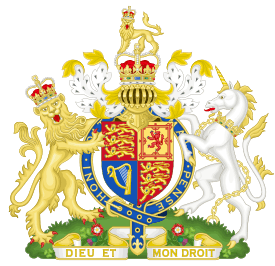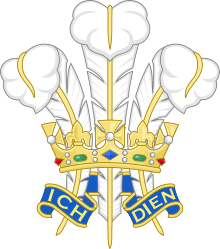Burberry
 | |
| Public company | |
| Traded as | LSE: BRBY |
| Industry | Fashion |
| Founded |
1856 (Basingstoke, England) |
| Founder | Thomas Burberry |
| Headquarters | London, England |
Number of locations | 498 (May 2016) |
Area served | Worldwide |
Key people |
|
| Products | |
| Revenue | £2,523.2 million (2015)[1] |
| £440.3 million (2015)[1] | |
| £341.1 million (2015)[1] | |
Number of employees | 10,851 |
| Website |
uk |
Burberry Group Inc is an English luxury fashion house, headquartered in London, England. Its main fashion house focuses on and distributes ready-to-wear outerwear, fashion accessories, fragrances, sunglasses, and cosmetics.
Established in 1856 by Thomas Burberry, originally focusing on the development of outdoor attire, the fashion house has moved on to the high fashion market developing pattern-based scarves, trench coats, and other fashion accessories. The first shop opened up in the Haymarket, London, in 1891. Burberry was an independent family controlled company until 1955, when it was reincorporated. The fashion house has dressed notable actors, world leaders, musicians, and athletes.
Its distinctive check pattern has become one of its most widely copied trademarks. Burberry is most famous for its trench coat. Burberry has branded stores and franchises around the world and sells through concessions in third-party stores. Its coats were worn in the trenches of World War I by British soldiers, and for decades thereafter Burberry became so much a part of British culture that Queen Elizabeth II and the Prince of Wales have granted the company Royal Warrants.
Christopher Bailey has been the CEO and Chief Creative Officer since 2014. The company is listed on the London Stock Exchange and is a constituent of the FTSE 100 Index. In 2015, Burberry ranked 73rd in Interbrand's Best Global Brands report, ahead of Ralph Lauren and Hugo Boss.[2][3] Burberry has more than 500 stores in over 50 countries.[4]
History
Early years, 19th century
Burberry was founded in 1856 when 21-year-old Thomas Burberry, a former draper's apprentice, opened his own store in Basingstoke, Hampshire, England.[5] By 1870, the business had established itself by focusing on the development of outdoors attire.[5] In 1879, Burberry introduced in his brand the gabardine, a hardwearing, water-resistant yet breathable fabric, in which the yarn is waterproofed before weaving.[6] "Burberry" was the original name, but then the company soon switched to using the name "Burberrys", after many customers from around the world began calling it "Burberrys of London". This name is still visible on many older Burberry products. In 1891, Burberry opened a shop in the Haymarket, London.[5]
20th century
.jpg)
In 1901, the Burberry Equestrian Knight Logo was developed containing the Latin word "Prorsum", meaning forwards, and later registered it as a trademark in 1909.[5] In 1911 they became the outfitters for Roald Amundsen,[5] the first man to reach the South Pole, and Ernest Shackleton, who led a 1914 expedition to cross Antarctica. A Burberry gabardine jacket was worn by George Mallory on his attempt on Mount Everest in 1924.[7]
Adapted to meet the needs of military personnel, the "trench coat"[5] was born during the First World War. After the war, the trench coat became popular with civilians. The iconic Burberry check has been in use since at least the 1920s, primarily as a lining in its trench coats.[5] Burberry also specially designed aviation garments. in 1937, A.E. Clouston and Betty Kirby-Green broke the world record for the fastest return flight from London to Cape Town in "The Burberry" plane – which was sponsored by the brand.[8] Burberry was an independent family controlled company until 1955, when it was taken over by Great Universal Stores (GUS).[9]
Influences and rise to prominence
Stars of the modern world began wearing the Burberrys brand. During the 1970s and 1980s, Burberrys signed agreements with worldwide manufacturers to produce complementary products to the existing British collection such as suits, trousers, shirts, sportswear, accessories, for men, ladies and children. These products, designed under the strict control of headquarters in London, were produced and distributed through independent retail stores worldwide as well as the Burberry stores, and contributed to the growth of the brand in sales and profits through to the late 90s, although the full extent of sales was not apparent in the parent company accounts since much was done through licensed agreements. The company had signed Lord Litchfield as photographer, Lord (Leonard) Wolfson was Chairman and Stanley Peacock OBE Managing Director. In 1998, Burberrys changed their marketing name to Burberry following the retirement of the aforementioned.
21st century

In May 2001, Christopher Bailey joined Burberry as creative director.[10][11]
However, between 2001 and 2005, Burberry became associated with "chav" and football hooligan culture. This change in the brand reputation was blamed on lower priced products, the proliferation of counterfeit goods adopting Burberry's trademark check pattern, as well as adoption by celebrities prominently identified with "chav" culture. The association with football hooliganism led to the wearing of Burberry check garments being banned at some venues.[12][13] GUS divested its remaining interest in Burberry in December 2005.[14][15] Burberry Group plc was initially floated on the London Stock Exchange in July 2002. In 2005, Sanyo-shokai was the Burberry ready-to-wear licence holder in Japan with retail value of €435 million.[16]
In 2006, Rose Marie Bravo, who as Chief Executive had led Burberry to mass market success through licensing, decided to retire.[17] She was replaced by another American, Angela Ahrendts,[18] who joined from Liz Claiborne in January 2006, and took up the position of CEO on 1 July 2006. Ahrendts and Bailey successfully turned around the then Chav-like reputation that the brand had acquired at the end of Bravo's tenure, by removing the brand's check-pattern from all but 10% of the company's products and buying out the Spanish franchise that was worth 20% of group revenues.[10][19][20]
Burberry first began selling online in the US, followed by the UK in October 2006, and the rest of the EU in 2007.[21] Bailey became Chief Creative Officer in November 2009, whilst it was reported that during 2012 Ahrendts was the highest paid CEO in the UK, making £16.9m,[22] the first time an English woman has held that title.[23]
In October 2013, it was announced that Ahrendts would take up the position of Senior Vice President of retail and online at Apple, Inc. from April 2014, and be replaced as CEO by Bailey.[24] During her tenure, sales increased to over £2 billion, and shares gained more than threefold to £7 billion.[25] Although Burberry promotes its British connection, according to The Guardian, a British national daily newspaper, as of July 2012, Burberry maintains two production facilities in Great Britain, one in Castleford producing raincoats, and one in Keighley.[26]
In spring 2014, Christopher Bailey became CEO of Burberry and retained the role as chief creative officer.[24] His basic salary is £1.1m, with total compensation of up to £10m a year depending on sales targets being met.[27] In July 2016, it was announced that Céline boss Marco Gobbetti will takeover as CEO of the FTSE 100 Company, while Christopher Bailey will become Creative Director and President.[28] Anusha Couttigane, senior fashion analyst at Kantar Retail, said that Mr Bailey excelled on product, but "pricing strategies, maximising profitability and thoroughly reviewing every aspect of the business" were not his main strengths.
Stores
The number of Burberry stores on 1 May 2016
|
Africa
|
Americas |
Asia
|
Europe
|
Oceania
|
Brand designs
Burberry operates under 3 sub-brands (2014):[1][29]
- Burberry Prorsum – The most fashion forward collection centered around runway shows, providing the design inspiration for the brand.
- Burberry London – The tailored collection, typically what a customer wears on weekdays for work.
- Burberry Brit – The most casual collection, typically worn on the weekend.
Products
The company's main fashion house focuses on and distributes ready-to-wear outerwear, fashion accessories, fragrances, sunglasses, and cosmetics.[29]
Selected gallery
- Burberry London Store on Bond Street
 Burberry scarf with check pattern
Burberry scarf with check pattern The Burberry check
The Burberry check
References
- 1 2 3 4 "Annual Report 2015" (PDF). Burberry. Retrieved 20 March 2016.
- ↑ "2014 Best Global Brands". Interbrand. Retrieved 15 March 2015.
- ↑ Interbrand. "Rankings - 2015 - Best Global Brands - Best Brands - Interbrand". interbrand.com. Retrieved 2016-03-04.
- ↑ Burberry Store Fashion. "Store locator". burberry.com. Retrieved 15 March 2015.
- 1 2 3 4 5 6 7 "Burberry History". Burberryplc.com. Retrieved 4 January 2011.
- ↑ Chastain, Sue (4 December 1985). "Trenchant coat cuffs may fray and buttons may pop but a true believer won't abandon his Burberry". Chicago Tribune. p. 40. Retrieved 15 March 2015.
- ↑ "Mallory and Irvine: Should we solve Everest's mystery?". BBC. 3 October 2011. Retrieved 9 March 2014.
- ↑ "DH Comet G-ACSS & The Burberry Racer Project". Key Publishing Ltd. 20 November 2009. Retrieved 18 May 2013.
- ↑ "Timeline: Burberry". 2 November 2010. Retrieved 9 March 2014.
- 1 2 McDowell, Colin (6 September 2009). "Christopher Bailey: Burberry's golden boy". The Times. Retrieved 7 December 2009.
- ↑ Jones, Dolly (11 November 2009). "All Hail Bailey". Vogue. Retrieved 7 December 2009.
- ↑ Bothwell, Claire (28 October 2005). "Burberry versus The Chavs". BBC. Retrieved 16 November 2015.
- ↑ Ostler, Catherine (5 November 2014). "As Romeo Beckham stars in their new ad, how Burberry went from chic to chav to chic again". Daily Mail. Retrieved 16 November 2015.
- ↑ Finch, Julia (18 November 2005). "GUS shareholders to receive Burberry cheque". London: Guardian News and Media. Retrieved 4 January 2011.
- ↑ Fletcher, Richard (18 January 2011). "How Burberry was kept in check at GUS". The Telegraph. Retrieved 12 May 2015.
- ↑ Chevalier, Michel (2012). Luxury Brand Management. Singapore: John Wiley & Sons. ISBN 978-1-118-17176-9.
- ↑ "Bravo move to quit puts Burberry shares out of fashion". The Telegraph. 7 October 2005. Retrieved 15 March 2015.
- ↑ "World Business Forum 2011 : Home". hsmglobal.com. Retrieved 15 March 2015.
- ↑ Hass, Nancy (9 September 2010). "Earning Her Stripes". The Wall Street Journal. Retrieved 9 March 2014.
- ↑ The Burberry Story Styl.sh. Retrieved 31 January 2014
- ↑ "Shop on line". Uk.burberry.com. 5 December 2010. Retrieved 4 January 2011.
- ↑ Petroff, Alanna (11 June 2013). "Top paid CEO in U.K. is an American woman". CNN Money. Retrieved 11 June 2013.
- ↑ Barrow, Becky (10 June 2013). "The 17 million FTST Queen - Burberry boss tops chief executive earning list". London: www.dailymail.co.uk. Retrieved 2013-06-11.
- 1 2 Marfil, Lorelei (8 April 2014). "Angela Ahrendts Named Honorary DBE". WWD. Retrieved 8 April 2014.
- ↑ Andrew Roberts (15 October 2013). "Burberry Designer Bailey to Become CEO as Ahrendts Goes to Apple". Bloomberg. Retrieved 15 October 2013.
- ↑ Carole Cadwalladr. "The hypocrisy of Burberry's 'Made in Britain' appeal". the Guardian. Retrieved 15 March 2015.
- ↑ "Burberry shareholders vote against remuneration report". BBC News. 11 July 2014. Retrieved 12 July 2014.
- ↑ Paton, Elizabeth. "Burberry C.E.O. to Step Down, Ending Dual-Role Experiment at Helm". NYTimes.com. New York Times. Retrieved 11 July 2016.
- 1 2 Fragrance and Beauty to be Directly Operated Retrieved 6 January 2014
External links
| Wikimedia Commons has media related to Burberry. |

.svg.png)

